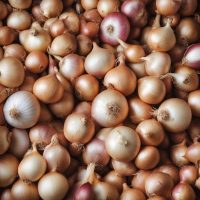Understanding the Health Benefits of Onions
Exploring the world of produce for its medicinal properties reveals the humble onion as a beacon of potential health benefits. This bulbous vegetable, a staple in traditional cooking around the globe, is packed with essential nutrients such as vitamins C and B6, folate, and potassium. Its popularity extends beyond the kitchen, thanks to its potent health-boosting components including flavonoids and sulfur compounds.
Research shows that onions might play a significant role in reducing heart disease risk factors, primarily due to their high concentration of sulfur compounds. These compounds are known for their anti-inflammatory and antioxidant properties, making them pivotal in the fight against chronic diseases. Moreover, the flavonoid quercetin found in onions has been studied for its potential in reducing high blood pressure and maintaining overall cardiovascular health.
Establishing the Relationship Between Onions and Socks
Before delving into the intriguing fusion of onions and socks, it is crucial to comprehend the independent characteristics of these two elements. Onions, belonging to the Allium family, have been known for their abundant health benefits for centuries. Famed for their hearty flavor and distinguished aroma in the culinary world, onions are also rich in vitamins and minerals, boasting powerful antioxidant and anti-inflammatory properties. They are used in various medicinal practices, including home remedies for cough, cold, and other minor ailments.
Socks, on the other hand, play a seemingly mundane but necessary role in our lives. As a staple in everyone’s wardrobe, they primarily function to provide comfort, shield our feet from friction caused by shoes, and absorb moisture, preventing blisters and fungi growth. Made from various materials such as wool, cotton or synthetic fibers, they exhibit exceptional properties for heat insulation and sweat absorption. Despite their contrasting identities, underneath lies an unusual, purported therapeutic measure that fuses the power of onions with the utility of socks.
How Onions Contribute to Wellness
Onions are more than just a culinary staple; they carry a multitude of health benefits, making them a vital addition to a balanced diet. Packed with nutrients and compounds known for their medicinal properties, onions offer significant wellness advantages. They are rich in vitamins C, B6, and folate, essential for the body’s normal functioning. Additionally, onions provide a good supply of dietary fiber, promoting healthy digestion and potentially reducing the risk of heart disease.
The lesser-known but equally noteworthy compounds in onions are its flavonoids and sulfur-containing compounds, which possess strong antioxidant and anti-inflammatory characteristics. Through these benefits, onions can support cardiovascular health, potentially lowering high blood pressure and reducing the risk of heart disease. Its antioxidant properties also contribute towards boosting the immune system, reducing the risk of inflammatory diseases and even certain types of cancer. Furthermore, the chromium present in onions assists in regulating blood sugar, a vital factor for diabetes management.
Decoding the Mystery: How Socks Come into Play
The practice of placing onions in socks is a traditional remedy that is revered in several cultures. The custom primarily originates from Eastern medicine where onions are recognized not only as a food item, but also for their therapeutic attributes. Notably, socks create the perfect environment where the beneficial onion compounds can be absorbed by the body.
At bedtime, individuals place onions in their socks and keep them on overnight. The skin being the body’s largest organ, is known for its permeability – virtually acting as a sponge to absorb substances applied topically. The argument is that when onions are housed in socks, the foot’s warmth enhances the release of the beneficial compounds. These ingredients are then absorbed by the skin into the bloodstream, potentially detoxifying the body and improving overall health.
The Science Behind Using Onions in Socks
Onions have a rich history in folklore medicine as a natural remedy for various ailments. The underlying premise is the belief that onions have the capacity to absorb toxins and disease-causing agents from the body. The placement in socks might seem quite random, but traditionalists argue that the foot, with its numerous nerve endings, serves as a conduit for the onion’s healing properties to enter the body.
This practice harnesses the concept of transdermal delivery, where substances pass through the skin into the bloodstream. Transdermal delivery is revered for its capacity to bypass the gastrointestinal tract, ensuring the delivered substances are not affected by stomach acid or digestive enzymes. Supporters of this practice vouch for it not just for toxin extraction, but also for its supposed benefits of boosting the immune system, improving blood circulation, and aiding overall wellness.
Real-Life Examples of Onions’ Health Advantages
In a myriad of cultures across the globe, onions have been regarded as a potent health booster. Their beneficial properties have been recognized and leveraged in traditional remedies, from relieving common cold symptoms to supporting heart health. One notable case study revolves around a woman in her mid-30s experiencing persistent throat infections. After the implementation of an onion-heavy diet, she reported an observable decrease in the frequency of her infections. A simple inclusion of onions in daily meals resulted in a significant improvement in her overall wellness.
Moreover, onions have demonstrated their therapeutic prowess in an interesting case of a man suffering from nocturnal leg cramps. The individual had constantly been plagued by painful spasms that disrupted his sleep. Upon placing cut onions in his socks overnight, a peculiar practice thought to draw toxins out of the body, he experienced a noticeable decrease in the intensity and frequency of his cramps. This unorthodox application of onions indeed suggests their potential usefulness in non-conventional health practices.
Critiquing the Onion and Sock Practice
The practice of placing onions in socks, in particular, has attracted considerable attention and critique. While proponents argue that this approach harnesses the onion’s potent detoxifying capabilities, skeptics remain dubious. Countless individuals argue that this method lacks tangible scientific support and is often associated with pseudoscience. These critics emphasize the importance of scrutinizing the effectiveness, safety, and the rationale behind such habits before blindly adopting them.
On the other hand, there is also the potential issue related to discomfort and impracticality. Not everyone finds the idea of sleeping with socks filled with onions appealing. This is due to the pungent smell that onions emit—one that detractors claim can linger on skin and bedding even after removal. These points of critique raise pertinent questions about the onion in sock practice, warranting further investigation and evidence-based discussions.
The Skeptics’ View on the Use of Onions and Socks
While the practice of putting onions in socks has grown in popularity within certain circles due to perceived health benefits, not everyone is convinced. Skeptics argue that this unconventional method lacks scientific evidence to substantiate its efficacy. These dissenters are typically composed of both medical professionals and everyday individuals who pride themselves on a scientific approach to health and wellness. They stress the importance of relying on empirical evidence when determining the effectiveness of any health promoting practice.
Critical voices suggest this onion and sock method to be yet another pseudoscientific claim, that can potentially deter individuals from seeking legitimate medical treatment. They claim that the promotion of such unproven remedies can be harmful, as individuals may ignore necessary medical intervention in favor of these ‘natural cures’. The assurances of improved wellness, they argue, are often based more on anecdotal accounts than reliable scientific studies. Furthermore, the underlying premise that harmful toxins can be absorbed through the soles of the feet is met with a strong scientific skepticism.
Addressing Common Myths About Onions and Socks
Diving into the world of home remedies, one might easily find themselves entangled in numerous myths surrounding the use of onions and socks. One common misconception is the belief that placing an onion in a sock and wearing it overnight can help eliminate toxins from the body. Despite its popularity, it has not yet been scientifically proven. The biggest contributing factor to this myth is onions’ known sulfur-containing compounds, which do have detoxifying properties. However, these properties function when consumed and processed by the body’s digestive system, not through foot contact.
Another common fallacy is that this practice can ward off flu or cold. This originated from the fact that onions have antibacterial properties and have been historically used to fight off viruses when consumed. Some people believe that the onion’s smell is enough to kill airborne germs and viruses. However, as per scientific research, to leverage the antimicrobial benefits of onions, they need to be eaten rather than placed in a sock and kept near the skin. Outside the body, onions will not combat germs and viruses as effectively, if at all.
Future Research and Potential Developments in Onion Therapies
As scientific curiosity intensifies, the humble onion is set to take center stage in a raft of innovative therapeutic applications. Researchers are exploring the potentially game-changing role of onions in the realm of health and wellness. With its rich array of beneficial compounds, principal among them being flavonoids and sulfur-containing molecules, the onion is being subjected to rigorous scientific scrutiny. Researchers believe these compounds could have powerful anticancer, antihypertensive, antiasthmatic, and antibacterial activities. Experimental studies are underway to gain further understanding of these properties.
Innovative treatments involving onions are on the horizon, promising a new era of wellness solutions. For example, there is growing interest in the use of onion-extracted quercetin for its anti-inflammatory and antioxidant properties. Moreover, onions’ potential antibacterial properties could be harnessed in developing new types of antimicrobial agents. Commitments from pharmaceutical companies and research institutions to leverage the health benefits of onions suggest optimism about the potential therapeutic developments. Translating these promising studies into clinical applications could revolutionize our approach to health and wellness. However, these potential treatments currently remain within the realm of scientific exploration, awaiting concrete evidence and confirmative trials of efficacy and safety.





























